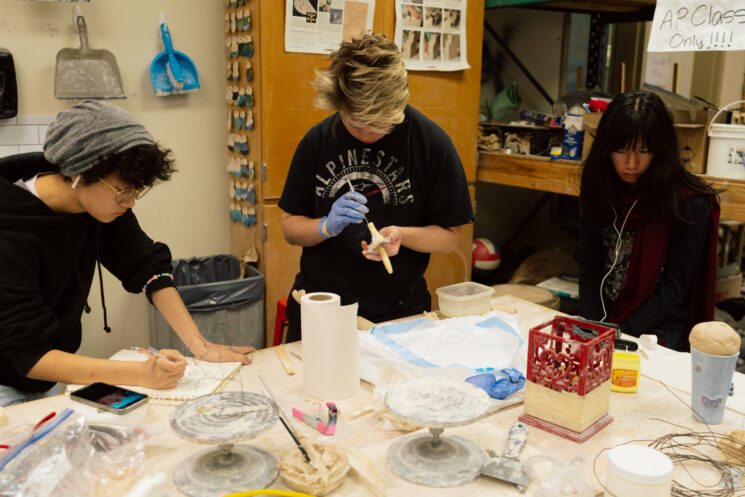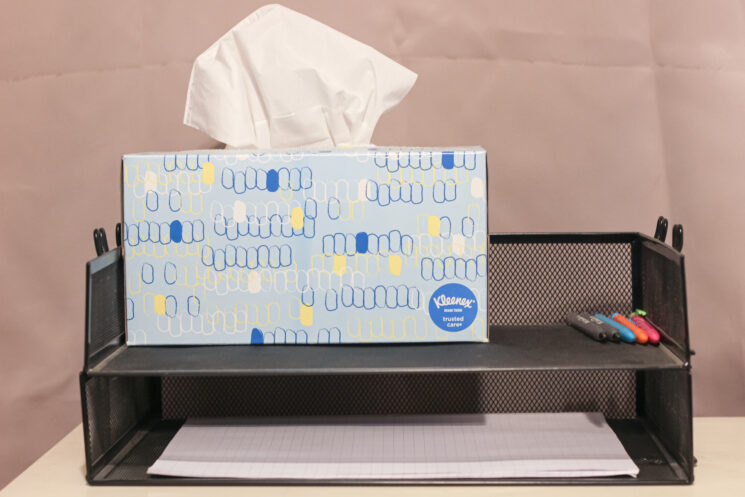
By Uy Pham
While schools provide students with the basic learning materials, some teachers find themselves spending their own money to enhance their classroom environment. Baron Banner surveyed various teachers to see how educational resources and opportunities are provided to students in the classroom.
FVHS receives general funding based on the enrollment numbers of the school. In 2022, it was announced that FVHS also qualified as a Title 1 school, meaning extra funding could go toward the four core subjects: English, mathematics, social science and science. The general funding would go towards other departments. Supplement funding from the Local Control Funding Formula, which is based on the state of California’s model for allocating education funds.
Certain departments, such as science and visual arts, also request voluntary donations from students and the community.
According to FVHS Principal Paul Lopez, most funding goes towards covering what teachers need for the classroom, with some funding going towards paying teachers and their sections.
“I usually do not like to give a hard number because I always want to provide teachers with what they need,” Lopez said. “Whatever number our departments get we adjust based on needs.”
What this funding covers
Baron Banner sent out a survey to teachers to see how this funding covers various supply and program needs for their classrooms.
Teachers reported that they are provided access to a desk chair and desk for themselves, along with devices such as laptops and iPads. They also have access to projectors, textbooks and printers.
The Huntington Beach Union High School District provides access to online learning platforms such as Canvas, Aeries, Google, Zoom and PearDeck, while departments such as math purchase subscriptions for Kahoot and Quizziz.
Department funding goes toward ensuring that there is a constant stock of school supplies for teachers. For example, the English department maintains a stock of classroom supplies such as dry-erase markers, pens, pencils, scissors and staplers. However, these supplies are generally for teacher use and not to be distributed class-wide for student use.
Coverage for printing and photocopying also comes from the respective department’s budget.
“One of the aspects of funding that is frustrating for me as a teacher is feeling that I am restricted to the number of copies I can make for students. It has always been an issue since I’ve started teaching,” math teacher Hoa Kim said. “It has helped tremendously that we have touchscreen Chromebooks with stylus to reduce the number of copies that need to be made, which is provided for by the district.”
What teachers pay for
Teachers also reported in the survey that they individually purchase some school supplies for their classroom The supplies that teachers may have to purchase for themselves largely depend and vary based on their classroom’s needs, including what subject or class they teach.
Extra classroom furniture, such as an alternative desk and chair, bookcases and other classroom decor, including posters, are examples of supplies teachers usually have to pay for themselves.
“In order to go from barren to Baron, I have spent countless amounts on furniture, lighting, pennants, artwork,” English and AVID teacher Kiersti Patton said. “Classroom library books, markers/colored pencils/crayons and supplies for a creative project, like origami or nice, larger paper, board games — anything fun.”
Funding also does not cover additional classroom supplies for the students, including extra pencils, crayons, compasses, card stock, rulers, sheet protectors, bulletin boards and calculator/phone holders.

Teachers may also have to purchase tissue boxes for their classrooms, as classrooms are only provided with paper towels. Other hygiene and cleaning supplies are also covered by teachers.
“The average person and parent is always surprised that we give students rough, brown paper towels to blow their noses,” Patton said.
For classes with additional equipment such as Virtual Enterprise (VE), VE teacher Sarah McCance reports having to purchase items such as employee of the month plaques, vinyl banners and booth decor.
Additional subscriptions to classroom projects or activities requiring programs such as Spotify Premium and YouTube Premium must be covered by the teachers.
Teachers have also pointed out that the department budget is finite, and if money is spent on one supply, there is less to spend on other resources.
“Yes, we can get some extras from the department budget, but the more we spend from it the less we can do as a department as a whole,” history teacher Brenda Silvertooth said. “Most of us want to make our classrooms warm and inviting and spend the extra [money] to make it happen.
Student donations
At the beginning of the school year, both the science and visual art departments ask for voluntary student donations to supplement their respective budgets.
For the science department, their budget from Title 1 allows the department to cover copies, classroom supplies, cleaning supplies and lab activity supplies for all students. Department money can also be put toward FVHS and HBUHSD relations with retailers such as Office Depot and Home Depot for other supplies.
Science teachers pay for their room decorations and may also make quick purchases at local retailers for classroom activities.
Student donations are required for other non-Title 1 expenditures such as lab water, equipment servicing, classroom equipment and “grocery” supplies from Smart & Final open purchase orders.
“Our FVHS community has always been extremely supportive of our science program. In my 22 years of teaching, we have always had the necessary resources, through a combination of site support and family donations, to provide amazing experiences for our students,” Science Department Coordinator Lehua Werdel said. “The science department is extremely grateful for this generosity and support.”
Similarly, the art department can fully fund five art classes with all the necessary supplies to run the class. However, extra specialty items are funded by teachers and student donations including additional paint brushes, papers, sketchbooks and other tools. The donations are also used to recover some costs of the more expensive supplies.
“In Ceramics, we ask that students pay $1 for each 5lb. bag of clay to try to recoup some of the funds,” Visual Arts Department Coordinator Kami Bigler said. “Art supplies are very expensive, and our yearly budget has not changed much even though inflation and prices have gone up on many of the supplies we must have to run our classes.”
Conclusions
In 2002, the Internal Revenue Service enacted an educator expense deduction for tax filings, which was recently raised from $250 to $300 beginning in 2023.
English teacher Dawn Lawler believes that teachers should have extra funding to put toward enhancing the classroom environment and teaching.
“The main thought that many educators have is that we should not have to use our own funds to purchase anything for our classes if it is for educational purposes. We should not have to buy our own furniture either,” Lawler said. “Teachers should have a yearly budget to purchase items that get approved, to use for teaching or to enhance the classroom environment.”
Math teacher Jane Springer pointed out that in her earlier careers, her job did not require her to purchase her own supplies.
“Before I became a teacher, I worked at DIRECTV for 15 years. Not only did they pay for anything needed, they also paid for my subscription to DIRECTV in my home, my internet bill, part of my phone bill and gave me a BlackBerry to use for work. So, anything I needed to do my job even outside of work was paid for,” Springer said. “When I became a teacher … [I] was pretty shocked that I also had to pay for my own supplies. It is by far the most rewarding job I have ever had, but it definitely comes with a price.”
Lopez is committed to ensuring that student and staff needs will always be met at FVHS, including these educational resources.
“We always put funds forth to meet student and staff needs. If a teacher asks for something we try to get it,” Lopez said. “Some items may be big ticket items that we can’t purchase but we will always try. Teachers should ask before buying anything out of pocket.”





